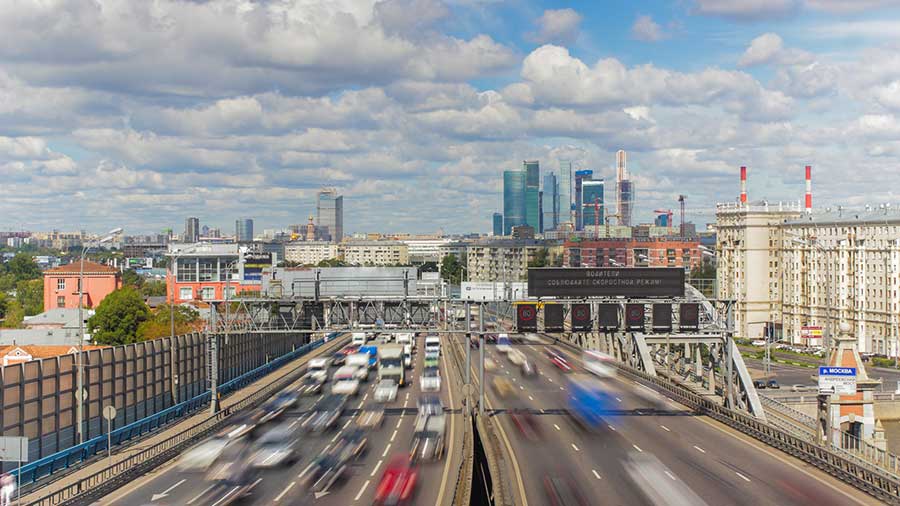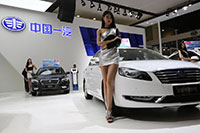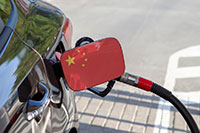China’s Auto Positioning In The 2023 Russian Market

Many foreign brands left Russia or suspended the supply of cars to the Russian market in 2022 – a vacancy now increasingly occupied by Chinese companies. Many of these have been drawing up specific plans to increase Russian market penetration for 2023 and beyond. Previous European plants are being purchased at knock-down prices while significant investments are also being made. Chinese brands, which accounted for more than a third of the market in 2022, will be more active.
During this year Chinese auto manufacturers based in Russia intend to produce a series of premiere class vehicles at a time when many auto factories in Russia will also return to work after several months’ downtime due to uncertain market conditions. In this article we look at which new Chinese auto investments and products can be expected during 2023.
FAW to St. Petersburg?

Russia’s AvtoVAZ has plans for the former Nissan plant in St. Petersburg. This factory will produce cars under the Lada brand, while not competing with the existing line of the Volga Automobile Plant. Negotiations with new partners are planned to be completed in January-February 2023, with production expected to begin in Q3 2023. China’s FAW has already been named as the main candidate. Whoever ends up partnering with AvtoVAZ, 2023 plans are to produce more than 400,000 vehicles over the year. To compare, BMW’s Spartanberg factory in South Carolina produced just over 400,000 vehicles in 2022 for the entire United States market.
DongFeng & BAIC to Kaliningrad?

Kaliningrad Avtotor, which previously assembled BMW, Hyundai and Kia, has entered into an agreement with new partners – with strong rumours about Chinese manufacturers DongFeng and BAIC. Details are expected in Q2. The company has already started test assembly of new cars.
Chery

The Chery brand is waiting for an update. From January 1, sales of Chery Tiggo 7 Pro Max, a deeply modernized version of the popular crossover, will begin in Russia. This car will have a changed appearance and interior, more options, but the same power unit and only front-wheel drive. However, a more powerful engine and all-wheel drive transmission are also promised, but later in the year.
With the Arrizo 8 sedan, the Chery plans to enter a new market segment, and will start selling a hybrid with a gasoline engine and two electric motors in Russia. They promise that the electric car will be able to drive up to 75 km, while fuel consumption in the combined cycle will be 1 liter per 100 km.
Exeed, Chery’s premium brand, is also planning a full lineup update. This will have a completely new model in 2023 – a coupe-shaped crossover presented in China under the name Yaoguang. This is the first model on a modernized platform and in the brand’s new style. The crossover will receive adaptive dampers, four-wheel drive with seven modes and a brake system that works by wire without connection to the pedal. Under the hood is a two-liter turbo engine paired with a “robot”.
New items are also promised for the Omoda brand, which is also owned by Chery, but there are no details yet.
Great Wall Motors

Great Wall Motors will launch two frame SUVs under the 300 and 500 indices under the separate Tank brand. There are rumours that among the new products there will be a relatively inexpensive M6 crossover, which will be located between Jolion and F7. In addition, there is a possibility that the Ora retro-styled electric cars will come to Russia.
Geely

Geely has re-certified the long-awaited Monjaro crossover, scheduled to go on sale in Russia at the beginning of the year. For a mid-size car, a two-liter turbo engine (238 hp) is provided, paired with an eight-speed automatic. The Monjaro is planned to be imported from China, while the inexpensive Geely Emgrand 7 sedans will be assembled in Belarus for the Russian market. It is equipped with a 1.5 liter atmospheric engine with a capacity of 114 hp; paired with a five-speed “mechanics” or a variator.
Other Chinese Market Entrants

Other brands, which had previously remained quiet in the Russian market are also becoming active. Changan stepped up in the second half of 2022, presenting its spectacular Uni-K crossover , and at the end of the year began selling restyled versions of its CS55 Plus and CS35 Plus crossovers.
In December, Russia’s largest car dealership OTTS received – another representative of the new family, a Uni-V liftback with a length of 4680 mm. The car is certified with a 1.5 liter petrol turbo engine (181 hp), a seven-speed “robot” and an independent rear suspension.
Livan, the heir to the once popular Lifan, went bankrupt and was renamed after the company was acquired by Geely. Currently, the first model of the brand is undergoing certification for Russia. This is a small crossover X3 Pro with a 1.5 liter engine with a capacity of 113 hp. with., which is equipped with “mechanics” or a variator.
At the other extreme is the status brand Hongqi (owned by FAW), which recently received Russian certificates for two of its models. The first model is a large (5137 mm) H9 premium sedan. It is planned to supply a base car with a two-liter engine (245 hp), a “robot” and rear-wheel drive to Russia. At the same time, an upmarket version with an extended wheelbase and a V6 engine is available in China. This is a mid-size Hongqi HS5 crossover with a two-liter engine, a six-speed automatic and all-wheel drive. Hongqi cars will be distributed by FAW Eastern Europe, which is already supplying FAW cars.
In addition, Iranian automakers and the Vietnamese company VinFast have also announced plans to enter the Russian market.
Russia Auto Manufacturing Free Trade Incentives

It should be noted that China, Iran and Vietnam all have Free Trade Agreements with the Eurasian Economic Union, (EAEU) which includes Russia as well as Armenia, Belarus, Kazakhstan and Kyrgyzstan as a free trade bloc. In turn, all these countries have bilateral trade agreements with members of the Commonwealth of Independent States, which additionally includes Azerbaijan, Moldova, Tajikistan and Uzbekistan.
In many ways, the Chinese are proven to be remarkably ahead of the game when compared to the withdrawal of EU auto manufacturers from the Russian market. This is not purely a reflection of the loss of the EAEU markets in particular, but also a complete loss of future EAEU market potential.
The EAEU also has a free trade agreement with Serbia, although this has recently proven problematic due to EU sanctions and prohibitions on rail transit from Russia. However, other countries known to be discussing FTA with the EAEU include the resumption of Uzbekistan as a full EAEU member, Bosnia & Herzegovina and Moldova in Europe (although Moldova has a recently-elected pro EU Prime Minister), Egypt, Israel and the UAE in the Middle East, Bangladesh, Cambodia, Indonesia, Mongolia, South Korea in Asia, and Cuba and Ecuador in Latin America.
The implications for Chinese auto manufacturers using the EAEU in particular as a springboard into other markets is highly significant.
Silk Road Briefing publishes recent promotional images of Chinese auto brand marketing on this article to illustrate that the Russian buyer will probably be more receptive to more rugged outdoors type of promotion as opposed to the currently somewhat sexist vibe. For assistance with Russia marketing and analysis please email to russia@dezshira.com
Related Reading





